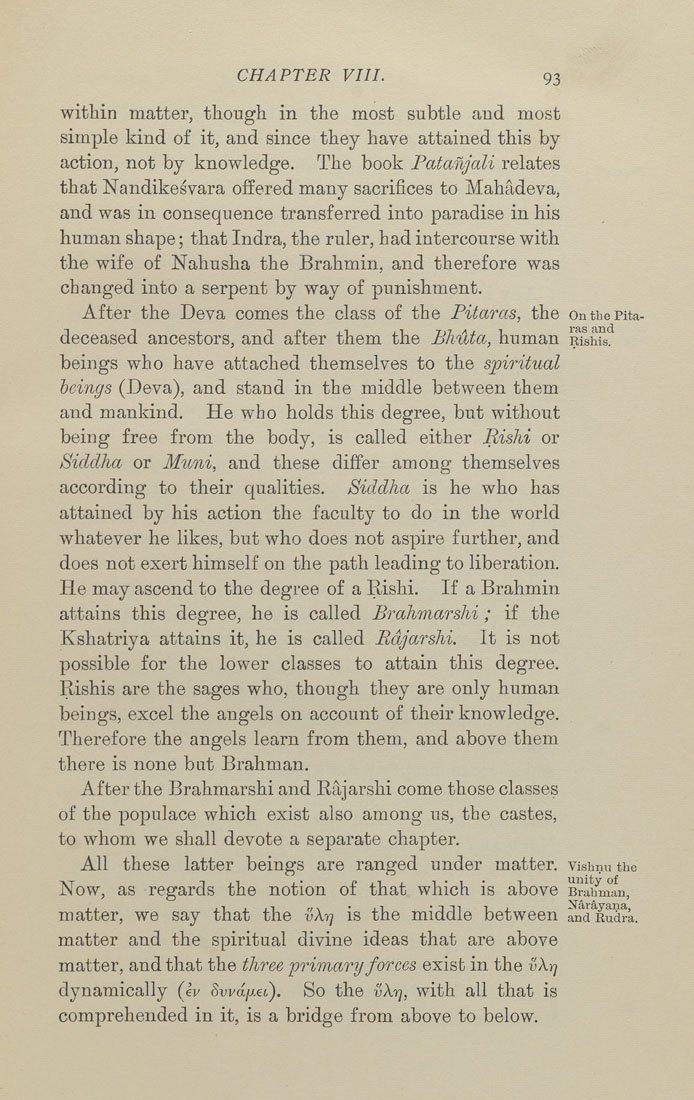Bīrūnī, Muḥammad ibn Aḥmad, Alberuni's India (v. 1)
(London : Kegan Paul, Trench, Trübner & Co., 1910.)
|
||
|
|
|
|
| Page 93 |

CHAPTER VIII. 93 within matter, though in the most subtle and most simple kind of it, and since they have attained this by action, not by knowledge. The book Pataiijali relates that Nandikesvara offered many sacrifices to Mahadeva, and was in consequence transferred into paradise in his human shape; that Indra, the ruler, had intercourse with the wife of Nahusha the Brahmin, and therefore was changed into a serpent by way of punishment. After the Deva comes the class of the Pitaras, the onthePita- deceased ancestors, and after them the Bh'dta, human rtisiiis. beings who have attached themselves to the sph-itual beings (Deva), and stand in the middle between them and mankind. He who holds this degree, but without being free from the body, is called either Rishi or Siddha or Muni, and these differ among themselves according to their qualities. Siddha is he who has attained by his action the faculty to do in the world whatever he likes, but who does not aspire further, and does not exert himself on the path leading to liberation. He may ascend to the degree of a Rishi. If a Brahmin attains this degree, he is called Brahmarshi ; if the Kshatriya attains it, he is called Bdjarshi. It is not possible for the lower classes to attain this degree. Rishis are the sages who, though they are only human beings, excel the angels on account of their knowledge. Therefore the angels learn from them, and above them there is none but Brahman, After the Brahmarshi and Rajarshi come those classes of the populace which exist also among us, the castes, to whom we shall devote a separate chapter. All these latter beings are ranged under matter, vishnuthe Now, as regards the notion of that which is above BrlbVan, matter, we say that the vXr] is the middle between ami^Rudra. matter and the spiritual divine ideas that are above matter, and that the three primary forces exist in the vXt] dynamically (kv Svi/a/xet), So the vXr^, with all that is comprehended in it, is a bridge from above to below. |
| Page 93 |







